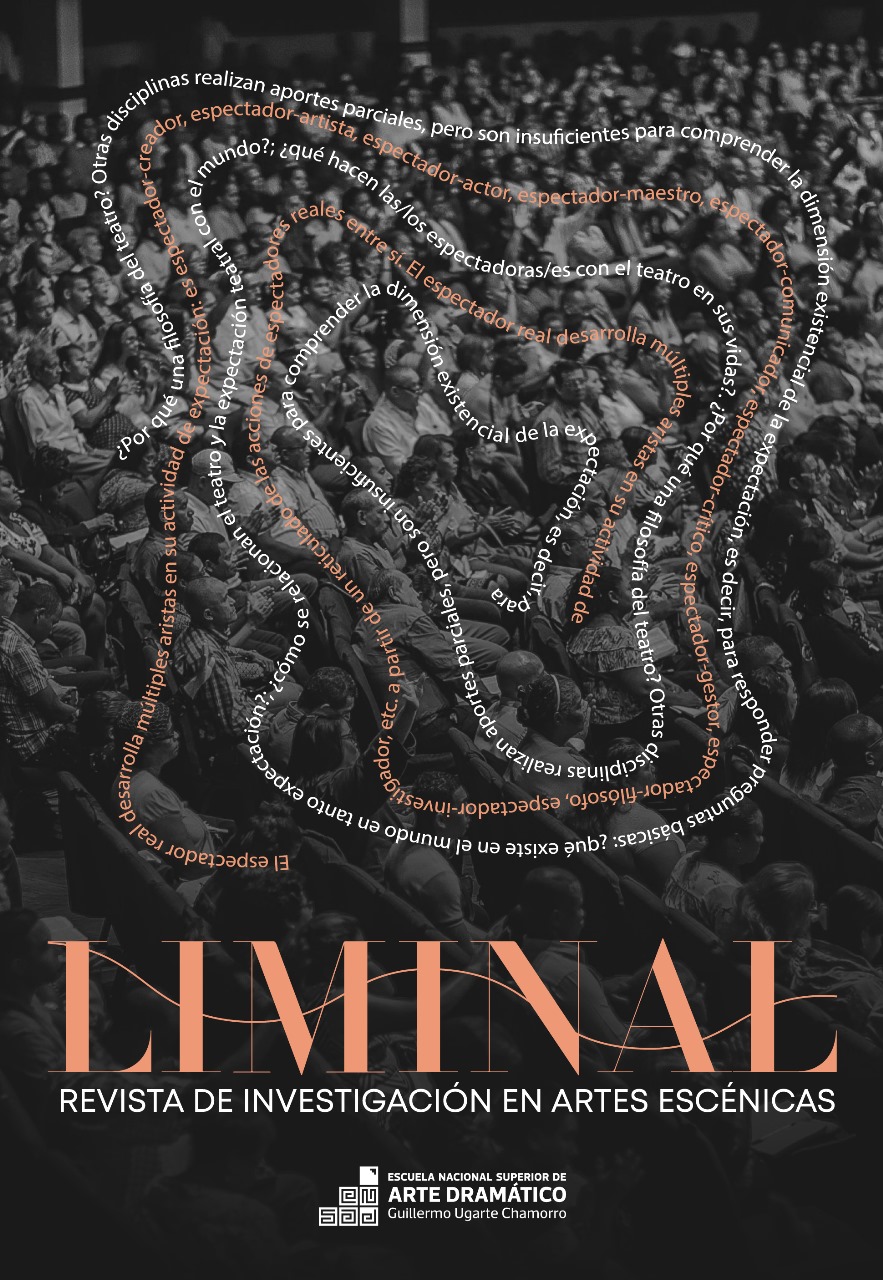Formación de espectadores, desarrollo de públicos y gestión de audiencias
tres puentes posibles para el fortalecimiento del sector
DOI:
https://doi.org/10.69746/liminal.a9Keywords:
Target audience, spectator education, audience developmet, audience managementAbstract
In this work we propose to characterize the concept of target audience and its vital relevance in the conception of any project to be carried out from comprehensive production designs, within public and private systems. From there, we analyze three modalities of linking with this audience: the training of spectators, understood as the cultural policies of promoting the habit and practice of watching theater; the development of publics such as actions aimed at market growth and demand; and audience management, in the knowledge and monitoring of links with those attending the performing spaces. The conceptualization of these work axes is complemented with examples of good practices, which allow us to think and project possible future strategies to continue working on the growth of the sector. These specific examples are taken from what has been done in recent years in the Autonomous City of Buenos Aires and some from other latitudes, but they are projected to other possible territorialities throughout Latin America. We believe that the construction of a target audience from the first conception of any performing arts project, as well as the knowledge and use of tools linked to its training, management and development, become crucial to contribute to the strengthening of the performing arts.
Downloads
References
Algán, R. (2019). Mercado teatral y cadena de valor. RGC Ediciones.
Algán, R. y Berstein, B. (2020). La construcción del público objetivo en los diseños de producción integral de artes escénicas. IV Jornada de Investigación. Instituto de Artes del Espectáculo. DOI: https://doi.org/10.22370/panambi.2020.10.2062
Algán, R. y Berstein, B. (2022). Producción integral de artes escénicas. Milena Caserola.
Algán, R. y Berstein, B. (2023). Del público objetivo a los indicadores de gestión: la presencia del espectador en las diferentes fases de la producción integral de artes escénicas. Actas de las III y IV Jornadas Internacionales de
Teoría, Historia y Gestión del Espectador Teatral del Instituto de Artes del Espectáculo publicadas en 2023.
De León, M. (2012). Producción de espectáculos escénicos. RGC Libros.
Dubatti, J. (2012). Cien años de teatro argentino. Biblos-Fundación OSDE.
Duran, A. & S. Jaroslavsky (2012). Cómo formar jóvenes espectadores en la era digital. Leviatán.
Duran, A. (2016). Nuevos públicos, artes escénicas y escuela. Leviatán.
García Canclini, N. (2005). «Definiciones en transición». Cultura, política y sociedad. Perspectivas latinoamericanas. Consejo Latinoamericano de Ciencias Sociales (CLACSO), pp. 67-93.
Hanna, A. (2017). Análisis de las políticas públicas vinculadas a la formación de públicos. [Tesis de maestría inédita, Facultad de Ciencias Económicas, Universidad de Buenos Aires].
Kotler, P y J. Scheff (2004). Marketing de las artes escénicas. Fundación Autor.
Kotler, P. y G. Armstrong (2017). Fundamentos del marketing. Pearson.
Porter, M. (2010). Ventaja competitiva: creación y sostenibilidad de un rendimiento superior. Pirámide.
Schraier, G. (2008). Laboratorio de producción teatral 1. Atuel.
Trovatto, G. (2013). “Breve acercamiento a la mediación cultural: hacia una delimitación del campo de estudio y una aproximación a sus aplicaciones didácticas en la combinación de lenguas español-italiano”. Didáctica. lengua y literatura. http://dx.doi.org/10.5209/rev_DIDA.2013.v25.42248 DOI: https://doi.org/10.5209/rev_DIDA.2013.v25.42248














